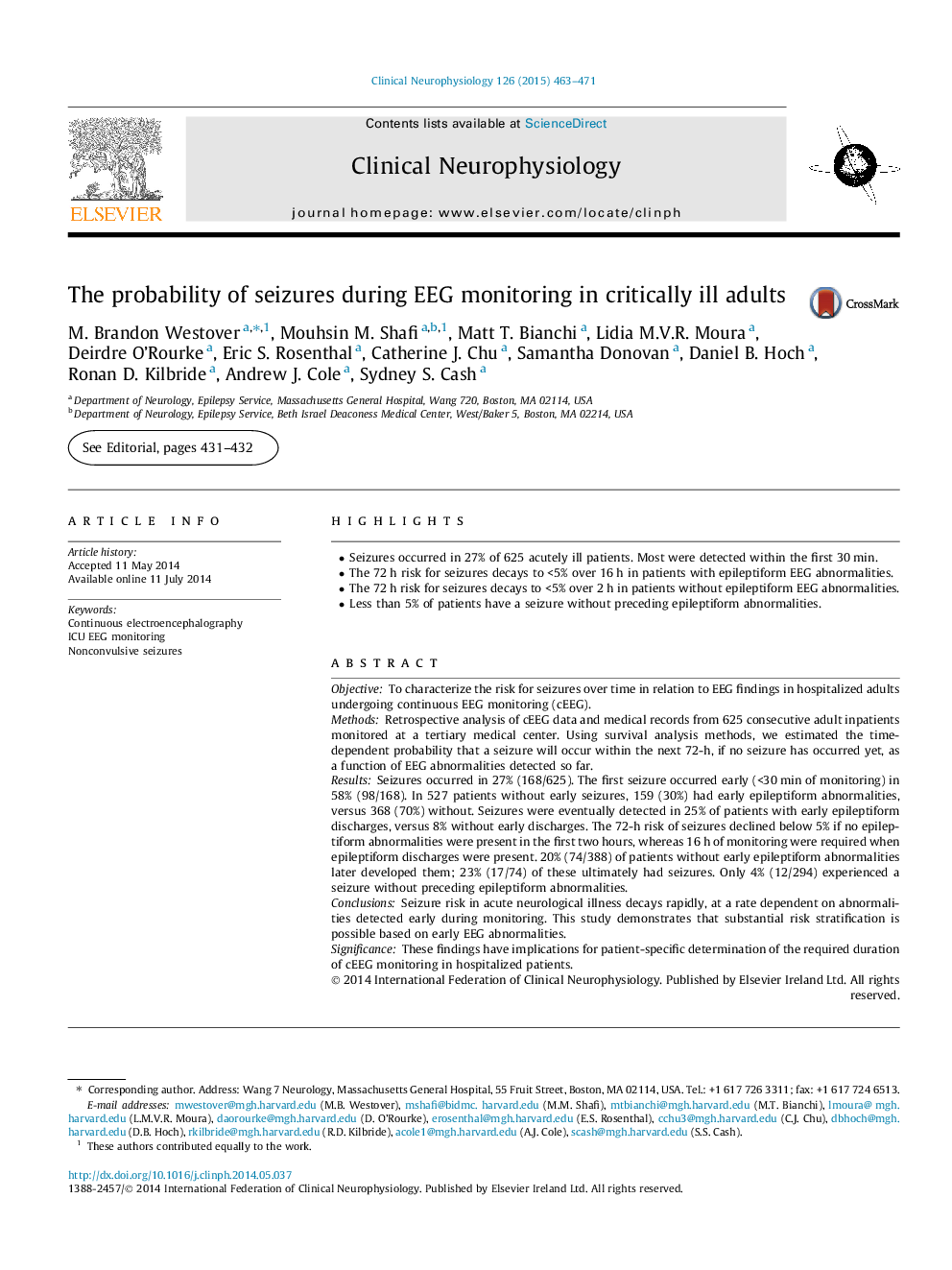| Article ID | Journal | Published Year | Pages | File Type |
|---|---|---|---|---|
| 3043705 | Clinical Neurophysiology | 2015 | 9 Pages |
•Seizures occurred in 27% of 625 acutely ill patients. Most were detected within the first 30 min.•The 72 h risk for seizures decays to <5% over 16 h in patients with epileptiform EEG abnormalities.•The 72 h risk for seizures decays to <5% over 2 h in patients without epileptiform EEG abnormalities.•Less than 5% of patients have a seizure without preceding epileptiform abnormalities.
ObjectiveTo characterize the risk for seizures over time in relation to EEG findings in hospitalized adults undergoing continuous EEG monitoring (cEEG).MethodsRetrospective analysis of cEEG data and medical records from 625 consecutive adult inpatients monitored at a tertiary medical center. Using survival analysis methods, we estimated the time-dependent probability that a seizure will occur within the next 72-h, if no seizure has occurred yet, as a function of EEG abnormalities detected so far.ResultsSeizures occurred in 27% (168/625). The first seizure occurred early (<30 min of monitoring) in 58% (98/168). In 527 patients without early seizures, 159 (30%) had early epileptiform abnormalities, versus 368 (70%) without. Seizures were eventually detected in 25% of patients with early epileptiform discharges, versus 8% without early discharges. The 72-h risk of seizures declined below 5% if no epileptiform abnormalities were present in the first two hours, whereas 16 h of monitoring were required when epileptiform discharges were present. 20% (74/388) of patients without early epileptiform abnormalities later developed them; 23% (17/74) of these ultimately had seizures. Only 4% (12/294) experienced a seizure without preceding epileptiform abnormalities.ConclusionsSeizure risk in acute neurological illness decays rapidly, at a rate dependent on abnormalities detected early during monitoring. This study demonstrates that substantial risk stratification is possible based on early EEG abnormalities.SignificanceThese findings have implications for patient-specific determination of the required duration of cEEG monitoring in hospitalized patients.
